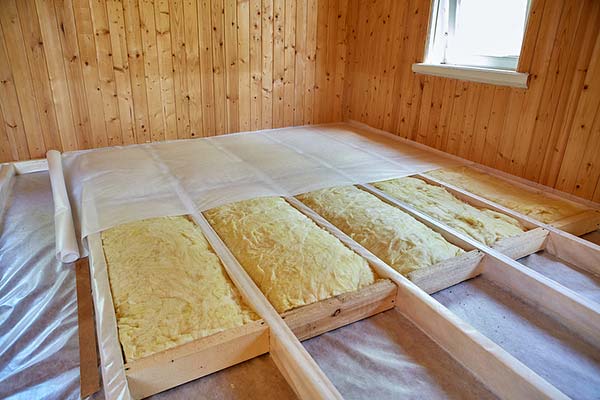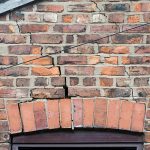Do you need to insulate your floor?

Older homes with suspended floors
Homes with solid or concrete floors
Houses that have been built after the 1930’s are likely to have concrete floors and so you won’t experience as much heat loss through the floor as you would with a suspended alternative.
However, concrete floor insulation can be installed, surprisingly. Although, it usually consists of an adequate layer of solid insulation that’s installed directly under the floor itself. Therefore, even the hardest of floors will be able to benefit from underfloor insulation.
Modern or newly-built homes
How does underfloor insulation work?
The concept is relatively simple once you get down to it, but it’s also highly-effective for your peace of mind. The primary purpose of underfloor insulation is to keep your home cool in the warmer months and warm in the colder months and it does this by creating a barrier, so to speak, which protects your property from airflow that comes up and out from beneath your floor.
Not only will this prevent warm air from escaping through the floor, but it’ll also stop cold air and draughts from penetrating the floor and reaching the property’s interior. This is a major problem for those who have wooden floorboards because they’ll have small gaps which will allow the air to flow in and out relatively freely. Together with underfloor insulation, you’ll also be able to opt for different types of insulation, including:
- Cavity wall insulation
- External wall insulation Loft insulation
- Room-in-roof insulation
What are the different underfloor insulation methods?
The process and type of underfloor insulation will differ greatly depending on whether you’re wanting to install insulation to an existing floor or are building a house which needs to have underfloor insulation fitted before any flooring is constructed. Where the average person is unlikely to have the funds to build their homes, it’s more feasible to focus, instead, on installing insulation to the flooring you already have.
Laying underfloor insulation to an existing floor is called retrofitting, but you’ll have to be prepared for it to be a time-consuming process which will take a considerable amount of effort. This is usually because furniture will have to be moved and existing flooring will have to be pulled up. As such, you should look to budget for new flooring and subsequent floor coverings.
However, there are some methods and insulation which are affordable and relatively straightforward in comparison to traditional underfloor insulation methods, although that is also an option if your home and budget will allow for it.
Draught-proofing
Draught proofing is a simple solution for those who are looking to insulate their homes, preventing warm air from seeping out of the property from a number of different elements, including windows and doors. However, sealant is particularly effective, especially when you’re filling gaps between bare floorboards or between skirting boards and the floor itself.
You’ll be able to do this yourself quite easily. Do some research and buy the materials you need for a fraction of the cost of conventional underfloor insulation solutions. Not only will you save money on the work itself, but you’ll also see your energy bills reducing also, further down the line.
Adding an insulation layer under carpets or floor coverings
Installing installation in crawl spaces or voids
If you have a void or crawl space under your home, then traditional underfloor insulation installation will be the best, most economical option for you. However, if the professional who has come to fit your underfloor insulation cannot get in the void or the crawl space you have, then the floorboards will have to be ripped up in order to properly lay the insulation.
You also need to pay attention to the ‘R’ value your insulation material has. The higher the ‘R’ value, the more effective the insulation will be. In fact, sheep’s wool is considered to be one of the best, natural insulation materials on the market, mainly due to its breathability because ventilation is important.
The underfloor insulation specialists will have installed vents throughout the void or crawl space in order to prevent the wooden floorboards from becoming moist or damp, which will subsequently mitigate woodworm or wood rot.
What are the benefits of installing underfloor insulation?
The benefits of installing underfloor insulation include:
- It provides thermal efficiency throughout the home, helping to keep the property warm in the winter and cool in the summer
- You won’t have to run electric heaters or air conditioners as often, if at all due to the aforementioned reasons
- You’ll save a significant amount of money on your energy bills due to the retention of heat around your house
- It’s an eco-friendly way of heating your property due to the fact that your heating will be on for shorter periods of time
0800 Repair Gas are proud to be able to provide our customers with specialist underfloor insulation solutions that can always be counted upon. Regardless of the age of your property, their expert team will be able to inspect your home and advise on whether underfloor heating is the best option for you. Regardless of your budget, they’ll always be on hand to help. For more information, get in touch with a member of their dedicated, highly-skilled team today.
This article is published by Ultimate Home Improvement blog uk




